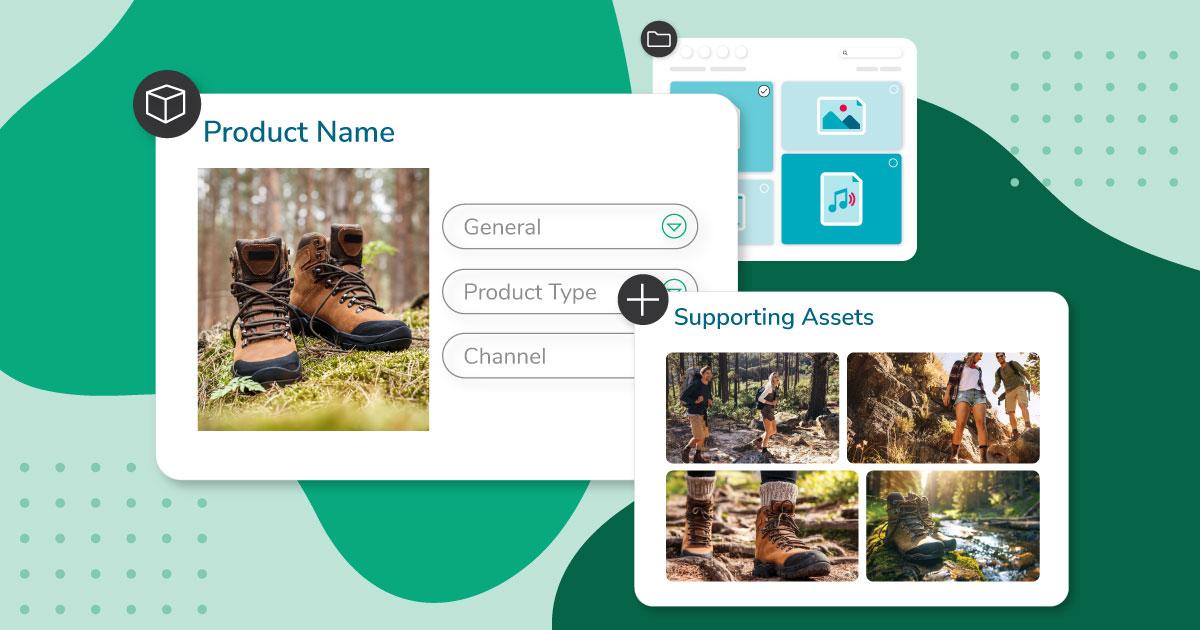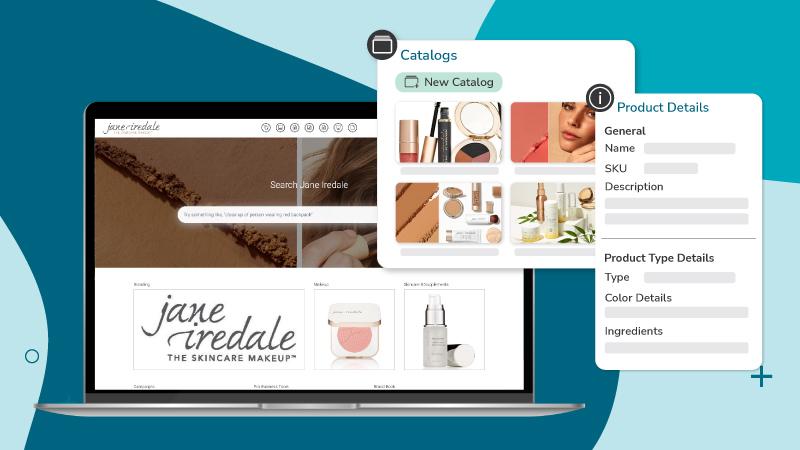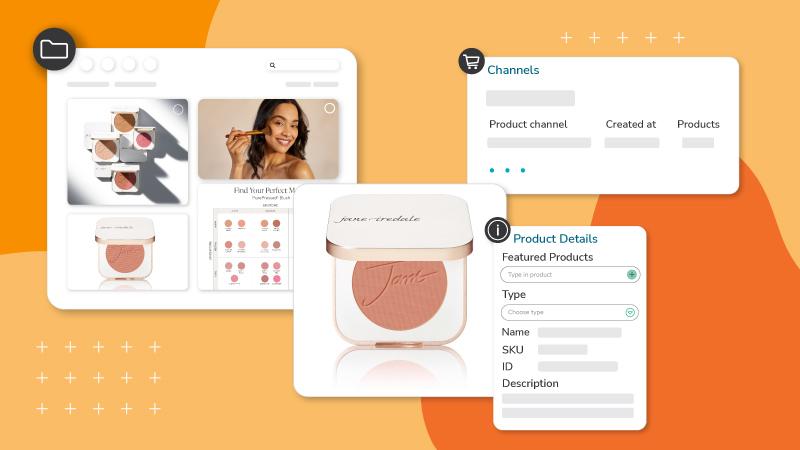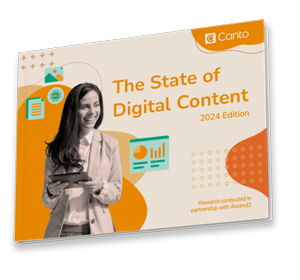Unify your marketing strategy with a PIM and DAM system
| December 3, 2024

Key highlights
- Difference between PIM and DAM systems: PIM systems store and manage product information, whereas DAM systems store and manage digital and brand assets
- Why you need a PIM DAM integration: Connecting PIM and DAM systems streamlines workflows, accelerates product and campaign launches, and improves productivity across teams
- A single platform for DAM + PIM is the best solution: Canto PIM unifies digital assets and product information, aligning teams and transforming product workflows for maximum efficiency and impact
Marketers and product teams rely on PIM (product information management) and DAM (digital asset management) systems. PIM and DAM systems are key to taming marketing asset and product information complexity. In today’s omnichannel marketing landscape, launching accurate, on-brand products requires streamlined workflows.
The solution is using a unified PIM + DAM platform, which creates a single source of truth by centralizing product information and digital assets in one cohesive system.
Below, you’ll learn:
- The limitations of using PIM and DAM systems separately
- How to connect PIM and DAM systems
- Why a unified PIM DAM system is the best solution
What is the difference between PIM and DAM systems?
Product information management software, or PIM systems, centralize and standardize product information: specifications, pricing, and descriptions. They ensure every sales channel and team member uses the same accurate product data.
Digital asset management software, in contrast, organizes digital assets like product photos, videos, and marketing materials. A DAM system maintains version control, manages digital rights, and ensures teams can quickly find and deploy the right assets for each campaign.
Both systems bring organization to digital chaos. PIM handles product information, while DAM manages creative and brand assets. However, in an omnichannel environment, you need to launch on-brand and accurate products quickly. When PIM and DAM systems are operating in silos, teams cannot coordinate efficiently to get content to market.
Read more about PIM vs. DAM.
The limitations of independent PIM and DAM systems
Independent PIM and DAM systems disconnect teams from resources. Here are a few efficiency challenges teams face with disconnected PIM and DAM systems:
- Marketing teams must manually check that product images match specifications across both systems
- Sales teams waste time searching separate platforms for up-to-date materials
- Content creators struggle to maintain brand consistency
When you operate without a PIM DAM system, it also negatively impacts the customer experience:
- Product listings appear with mismatched images
- Marketing campaigns launch with outdated specifications
- Social media posts contain incorrect pricing
The manual work required to prevent these errors slows time to market and diverts resources from strategic tasks.

Why you need a PIM and DAM integration
A PIM DAM integration connects your product information and digital assets, enabling teams to work more efficiently with better alignment between data and content. Instead of juggling separate siloed systems, this integration allows teams to streamline workflows and maintain consistency, ensuring that product information and assets work together.
Accelerated time to market
You need to launch campaigns and products faster than the competition. With a PIM DAM system, your marketing, content creators, and sales teams can find and access on-brand content and product information, speeding up workflows.
With DAM integrations to other marketing stack tools, your teams can also find and access on-brand content in the tools they already love to use.
Improved brand consistency
Stop off-brand product launches before they ever begin with a DAM/PIM ecosystem in place. A PIM and DAM integration gives you a system to manage product information and brand assets. Teams are always equipped with on-brand digital assets and accurate product information, enhancing brand consistency across channels.
Increased team productivity
With PIM and DAM integration, product specifications and supporting images are aligned. Content creators can access both product data and creative assets easily, ensuring accuracy across channels. Also, sales teams find everything they need to hit the ground running.
Scalable operations
A DAM/PIM ecosystem is the perfect scalable product content system. As your teams, product lineup, and content grow, your PIM and DAM system can scale to meet your latest product launch and campaign needs with ease.
Boosted content ROI
A PIM DAM system maximizes product content and information value by keeping your most valuable assets accessible. Also, as your product photography and attributes get reused and repurposed across teams and channels, they provide increased value to your organization.
Optimized customer journeys
You need to provide the same consistent digital customer experience no matter what channel customers interact with your organization through. With a PIM and DAM integration, you can ensure that every product shot is the latest and every product listing is 100% accurate, elevating customers’ perceptions of your brand.
How to connect PIM and DAM systems
Here’s the steps to connect PIM and DAM systems:
- One way is to use a built-in PIM and DAM integration, known as a direct connector. Many DAM platforms have integrations to popular PIM platforms that you can use to connect your DAM/PIM ecosystem together.
- Map specific fields so that product information and content are in sync to meet your teams’ needs. DAM platforms allow you to create automated content workflows for asset creation, collaboration, approval, and distribution into your main library. Meanwhile your PIM platform will keep your teams and channels updated with accurate product information.
- Finally, you’ll want to train your teams on how to use your PIM and DAM systems for efficient use.
Some best-in-class systems, like Canto PIM, include PIM and DAM within one unified solution, making integration unnecessary. A unified PIM DAM system streamlines implementation, accelerates time to value, and equips product, marketing, and sales teams with approved digital assets and product information.
What is the difference between a unified PIM DAM system and PIM DAM integration?
A PIM DAM integration relies on custom connectors or third-party tools to link separate systems, enabling them to work together. On the other hand, a unified PIM DAM solution is a single platform that combines the functionalities of both software types, designed to work together from one place.
While both solutions provide the benefits of PIM and DAM, unified platforms offer easier setup without external connectors or APIs, a consistent user experience, and reduced risks of compatibility issues or data synchronization delays.

What types of businesses need a PIM DAM solution?
A unified PIM DAM system is particularly valuable for businesses managing large product portfolios across multiple channels, such as:
- E-commerce retailers
- Fashion brands
- Consumer packaged goods (CPG) companies
- Manufacturers
- Food and beverage brands
- Health and beauty companies
Any business that maintains many product variations, sells through multiple channels, or needs to coordinate marketing campaigns across regions benefits from a PIM DAM solution. A unified platform offers the benefits of being easier to manage, built to scale, and more effective at both digital asset and product information management.
Canto is the leading DAM + PIM solution
Combining PIM and DAM systems is essential for businesses to transform their product experience, align teams, and deliver a consistent omnichannel experience – but not all DAM and PIM solutions are created equal.
Canto PIM is purpose-built to unify teams, streamline product workflows, and maximize content value by integrating PIM and DAM capabilities in a single platform.
Canto PIM centralizes your product information and digital assets, serving as a single source of truth for your organization. With advanced tools for collaboration, automated workflows, and real-time updates, Canto PIM equips your teams with the most accurate data and assets. The result? Faster time to market, enhanced brand consistency across channels, and an optimized customer experience, all powered by a platform that scales with your business.
Interested in what a unified DAM and PIM could do for your business? Download our free eBook now: From Chaos to Clarity: Transforming Your Product Experience with DAM and PIM.
PIM and DAM systems frequently asked questions
What is the meaning of PIM DAM?
PIM stands for product information management, and DAM stands for digital asset management. PIM and DAM systems work together to bring product information and digital assets into one cohesive workflow, streamlining product operations and hastening campaign launches.
